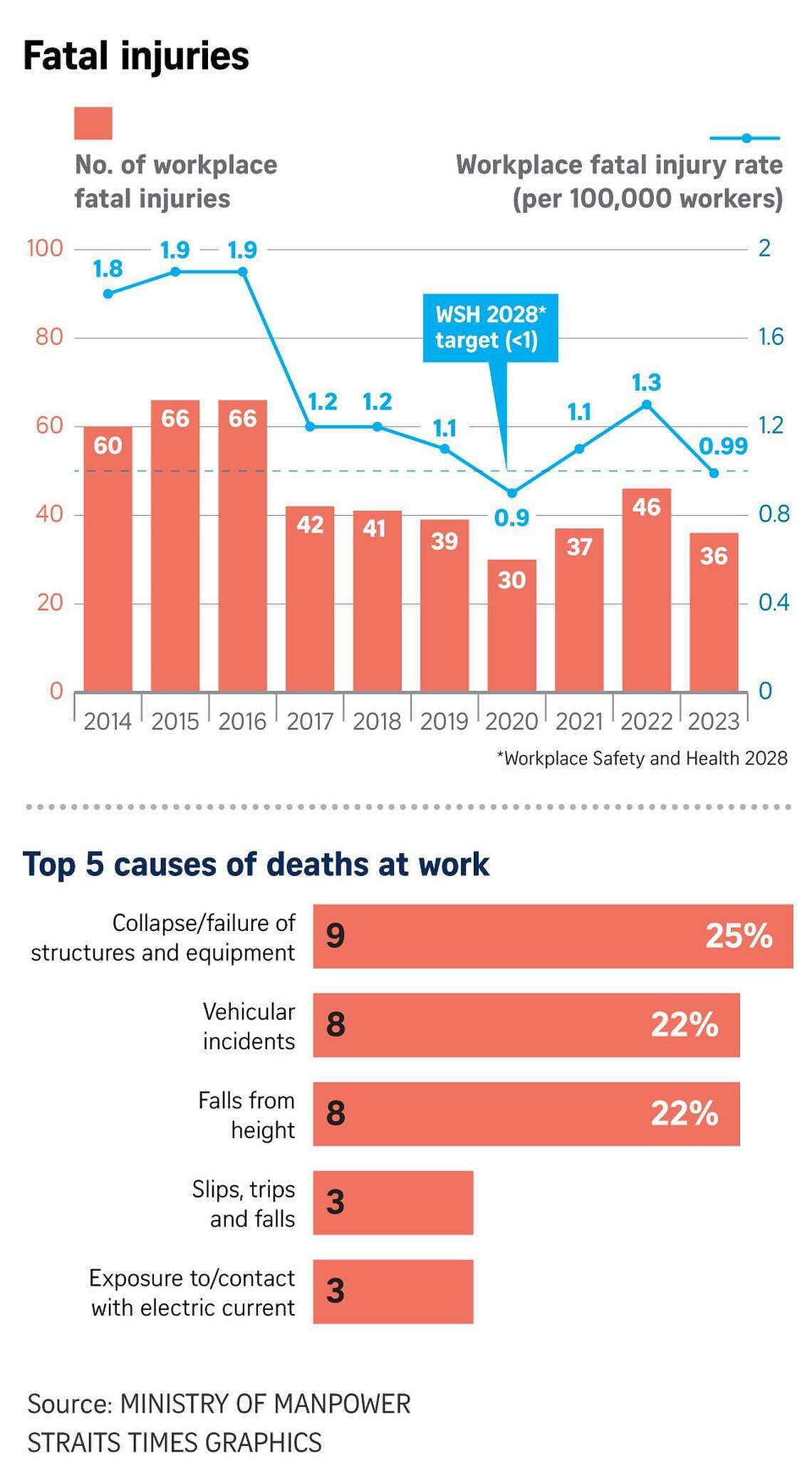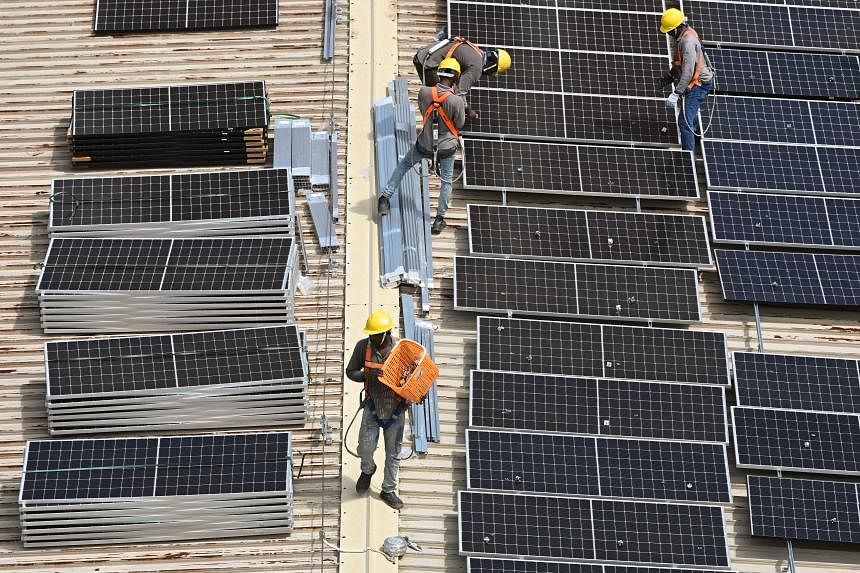SINGAPORE - For every 100,000 workers, about 16 had major injuries at work, and fewer than one died on the job in 2023.
This is Singapore’s lowest workplace fatality rate, and is the lowest workplace major injury rate in a decade, not including 2020 during the Covid-19 pandemic, said the Ministry of Manpower (MOM) in its annual workplace safety and health report on March 27.
The top two sectors for workplace incidents – the construction and the transportation and storage sectors – saw a decrease in both their combined fatal and major injury rates.
But the manufacturing sector was flagged by MOM for having the highest combined fatal and major injury rates.
Still, excluding 2020 when the Covid-19 pandemic caused significant disruptions, such as foreign workers having to stop work, 2023 was the first time the workplace fatality rate fell below the one per 100,000 workers mark.
Thirty-six workers died in 2023, a 21.7 per cent drop from the 46 deaths in 2022. This is a workplace death rate of 0.99 per 100,000 workers, down from 1.3 in 2022.
Having the workplace fatality rate fall below one per 100,000 workers was a goal Singapore had set to achieve by 2028, a number only the Netherlands, Sweden, Germany and Britain had consistently attained.
The low numbers come after a heightened safety period from Sept 1, 2022, to May 31, 2023, and new measures to stem workplace incidents. These included giving small and medium-sized enterprises more resources to improve their safety processes.
There were 590 major injuries in 2023, down from 614 in 2022. Major injuries refer to severe non-fatal injuries, which include amputations, blindness and fractures.
On March 27, during a site visit to logistics firm Nippon Express (Singapore) in Toh Guan Road East in Jurong East, Senior Minister of State for Manpower Zaqy Mohamad said: “But (the statistics) is not something for us to say we’ve arrived, even though we’ve achieved our target ahead of schedule.
“What’s more important is how we make sure that we sustain this... because it’s one thing to be able to reach certain heights, but we want to also maintain it and ensure we are there on a sustained basis.”
The construction sector saw the most number of deaths in 2023. Eighteen workers died, including Mr Vinoth Kumar, 20, who was killed when a wall collapsed during demolition works at the Fuji Xerox Towers site in Tanjong Pagar on June 15, 2023.
This was four more deaths than in 2022 for the sector. However, the number of major injuries dropped from 157 in 2022 to 149 in 2023.
In the transportation and storage sector, the number of deaths and major injuries also fell. Eight workers died and 47 had major injuries in 2023, compared with nine deaths and 61 major injuries in 2022.
Though fatalities in the manufacturing sector dropped from seven to five, the number of major injury cases jumped from 122 to 150.
The injuries were mainly due to machinery incidents, or slips, trips and falls. Common causes included companies’ lack of control measures and workers not complying with safety measures, said MOM.
The metalworking industry, which is part of the manufacturing sector, was of particular concern. It had 61 fatal and major injury cases, up from 40 in 2022.

Metalwork relies more heavily on higher-risk machines, said MOM at a media briefing on March 25, when asked why the sector was more prone to such incidents.
Between October and November 2023, MOM conducted over 650 inspections in the metalwork sector and meted out $32,000 in fines.
The ministry extended the demerit point system to the manufacturing sector in October 2023. It had been used in the construction sector for years.
Companies that accumulate sufficient demerit points due to safety violations will be temporarily banned from hiring foreign employees for up to two years.
There are 759 companies with demerit points, of which four are barred from hiring foreign workers for a three-month period, according to a list on the MOM website.
On how the demerit point system has impacted the manufacturing sector, Mr Zaqy said: “It’s just been five months. Let us review how that has been performing. But we hope the same performance will be derived, as what we’ve seen in the construction sector.”

Falls from height were one of the main reasons for accidents, causing eight deaths and 67 cases of major injuries at workplaces.
MOM said there were more work-from-height activities, with the increase in projects involving the installation of solar panels. There were two fatal accidents involving such work in 2023.
National Trades Union Congress assistant secretary-general Melvin Yong said during the site visit that more workers are reporting safety concerns, as some companies simplify their reporting processes. He said: “I think that’s what we’re trying to encourage, in terms of building that culture where workers feel safe to report safety concerns.”
Now that fatality and injury numbers are down, Mr Zaqy said it is time to focus on more long-term issues like occupational diseases, such as noise-induced deafness and back sprains.
The rate of occupational diseases rose from 29.7 per 100,000 workers in 2022 to 33.6 in 2023.
This was due to enhanced workplace health surveillance efforts, leading to more reports made by doctors and employers, said MOM.
To tackle this, MOM requires companies where workers have higher exposure to toxic substances or noise to adopt risk controls and undergo third-party audits.

